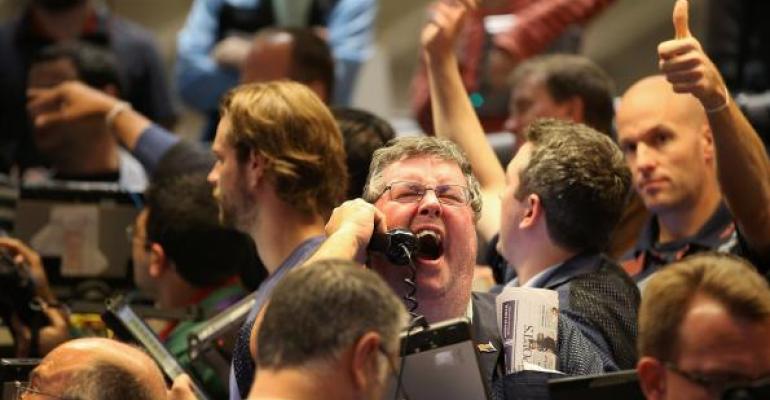(Bloomberg) -- US Treasuries are supposed to be the steady part of the portfolio, insulated from the stock market’s daily drama. But by one measure, the swings in bond prices are expected to keep exceeding those for equities by the most in at least 18 years.
A gauge of the anticipated price swings in the world’s largest Treasury ETF exceeded those of the biggest stock fund this month by the most since at least 2005, when the data compiled by Bloomberg begin.
Three-month implied volatility on the $39 billion iShares 20+ Year Treasury Bond ETF (TLT) is more than 4 percentage points above that of the $397 billion SPDR S&P 500 ETF (SPY). That’s flipped their traditional relationship on its head, since the volatility on the bond ETF has been, on average, more than 3 points lower.
US government bonds are a pillar of investors’ portfolios because they typically function as one of the safest and least volatile assets in the world, providing a steady stream of income and serving as a buffer against the risks tied to stocks.
But the combination of the aggressive policy tightening by the Federal Reserve and the flood of bond sales by the US government to fund its swelling deficits have imposed historical losses on long-duration bonds. Rising geopolitical tension in the Middle East has increased the uncertainties further.
“Volatility is off the chart,” said Ben Emons, a senior portfolio manager at NewEdge Wealth. “People are trading bonds like stocks.”
The volatility was on full display this week. Following a hot inflation report and a weak bond auction, the 30-year Treasury yield jumped 16 basis points on Thursday, the most since the market turmoil at the onset of the pandemic in March 2020. The yields then retraced about half of the move Friday as traders prepare for Israel’s potential ground invasion of the Gaza Strip.
Read More:
Long Bonds’ Historic 46% Meltdown Rivals Burst of Dot-Com Bubble
Dreams of Big Bond Gains Backfire With $10 Billion ETF Loss
Worst Treasuries Selloff Since 1787 Marks Bond-Vigilantes Return
The losses on bonds have also far outstripped those on stocks. Over the past two years, the bond ETF has lost 37%, compared with a 3% gain in the stock fund. Despite the losses, investors have kept piling into the TLT fund, betting on potential outsize gains once yields start to decline.
On the upside, the relatively low equity volatility suggests that investors expect the US economy to remain resilient to the Fed’s interest-rate increases. The risk, however, is that a further rise in bond yields could tighten financial conditions enough to choke economic growth and corporate earnings.

